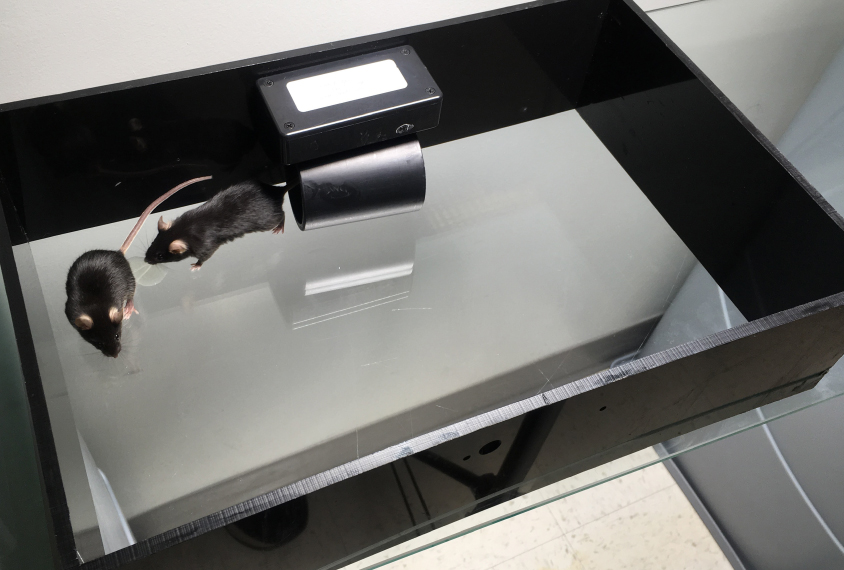
THIS ARTICLE IS MORE THAN FIVE YEARS OLD
This article is more than five years old. Autism research — and science in general — is constantly evolving, so older articles may contain information or theories that have been reevaluated since their original publication date.
A new device measures how long a mouse cozies up with a cagemate in a tiny tube. Researchers can use the tool to detect social impairments in mice with mutations tied to autism1.
Scientists often assess sociability in mice using the so-called three-chamber test, in which mice choose between a space occupied by an unfamiliar mouse and an empty chamber. Mice with mutations in some autism genes may choose the empty chamber — hinting that they are not as sociable as controls. But the test is short — lasting about 15 minutes — and the unfamiliar mouse is contained in a small cage within the chamber. This does not reflect a typical social situation for mice.
Other social tests for mice involve recording rodent behaviors such as sniffing, chasing, wrestling and grooming. But these tests are labor intensive.
The new contraption, described 23 May in Proceedings of the National Academy of Sciences, automatically assesses mouse sociability while allowing both mice to roam, a situation that more closely resembles natural encounters.
An opaque piece of PVC tubing fitted with weight sensors indicates whether one, two or zero mice are inside. The sensors are connected to a computer that records the weight on the sensors over three hours.
The tube sits inside a brightly lit box. The bright open space makes mice nervous: When alone in the box, mice tend to hide in the tube. But when two mice are in the box, the animals spend varying amounts of time in the tube, separately and together, depending on their familiarity with each other, their gender and their strain.
Researchers tested the device with pairs of mice from 12 lab strains, including 2 autism models, as well as with pairs of mice caught in the wild. The wild mice spend less time in the tube with an unfamiliar mouse than the lab strains do, indicating that the lab mice may have inadvertently been bred to be more social. But differences emerged among the strains.
Mice with a mutation in FMR1, the gene disrupted in fragile X syndrome, spend significantly less time together in the tube than control mice do, suggesting they are more anxious in the presence of strangers. Mice with a mutation in EIF4E, which is implicated in autism, show the same behavior.
The device is easy to put together, so researchers can make their own versions to observe social behavior in any mouse model of interest.
By joining the discussion, you agree to our privacy policy.